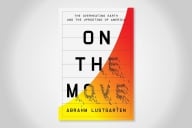You have /5 articles left.
Sign up for a free account or log in.
Do you recognize your college in David Theo Goldberg’s provocative postsecondary dystopian essay Coming to You Soon: Uber U?
For me, the answer is no.
Call it small liberal arts college it bias. Call it privilege. Call it a structural blindspot. Call it whatever you will - my lived higher ed experience is one of (mostly) progressive improvement.
This is in no way to minimize the challenges faced across our postsecondary sector - challenges that are well articulated in Goldberg’s essay. Rather, I’m hoping to open up a space for a more nuanced discussion of the future of higher education.
And to make the argument that if Goldberg is correct about the future Uberization of academia, that the antidote to this bleak future might be found in a very old model of the small liberal arts college.
Why do I believe in a positive and bright future for higher education?
Perhaps the reason that I’m bullish on the future of colleges and universities is that I’m generally positive about the future.
This belief, that our kids and grandkids will live better than us, seems at odds with current fashion of collapse thinking. Many in higher ed see only a future of robots taking our jobs, the middle class being hollowed out, and of the world being run by an ever more powerful cognitive and financial elite. Within this context of a general dismay about the future, the belief that higher education will also share in the overall narrative of decline seems plausible.
But what if the declinists are wrong in general, and therefore wrong in the particulars of postsecondary education?
What if the world in 2030 (or 2050) will be wealthier, more democratic, and less violent? Spend some time on the Our World in Data site - and you might feel better about the future than you do now.
Can a generally positive frame on the future be applied to higher education?
Is it possible to see a positive future for our colleges and universities, while at the same time be honest about the very real challenges and obstacles that we all face in reaching this future?
Here is why I think that higher ed is improving, and will improve in the future.
Our Students: The best cure for depression about the future is to spend some time with today’s students. I’m thinking both of the traditional 18 to 22 year old student, as well as the faster growing segment of adult working students. Today’s students are smarter, more interesting, and more curious than at any time in the past. I attribute much of the goodness I see in our students to the fact that our student bodies are ever more diverse. Diverse by gender, race and ethnicity, sexual orientation, national origin, and every other way that we measure diversity. This diversity has brought an energy to our campuses that did not exist when I was an undergraduate (1987-1991) - a diversity path that will only expand following future demographic trends.
Our Educators: I think that it is easier for those who have never spent time working outside of higher ed to miss the big reason why working inside higher ed is go rewarding. The answer is the people. There are no better colleagues to have than higher ed colleagues. Those who choose to go into higher education do so overwhelmingly for reasons other than maximizing their income. (Maybe the most obvious statement ever). Higher ed people love their disciplines, they love teaching and the work of developing people, and they are fully dedicated to the larger mission of expanding knowledge and opportunity. The fact that our postsecondary workforce - our faculty and non-faculty educators - has become more diverse is another reason why I’m positive about the future of higher education. Those of us who work in higher ed are not without agency. We have a role to play in shaping the priorities and practices of our institutions. I tend to trust that my colleagues in higher ed will play a part in leading our colleges and universities to a future that makes sense.
Our Practices: Almost everything about higher education is in a rapid state of change. Part of these changes are in response to bad public policies - most notably the state level disinvestment in public postsecondary education that so many schools (and systems) are struggling to manage. Other challenges include the rising cost of postsecondary education in the face of challenging demographics (particularly for smaller, tuition dependent schools). The story that is less often told is just how much positive innovation and change is occurring on our campuses. I see this innovation mostly in my world of teaching and learning - both in online / blended learning and residential / face-to-face teaching - but positive change is not limited to this area. The rate of change may be unequal, and some schools may be doing more to invest in quality while improving access and affordability, but our industry is anything but static.
This is not to suggest that higher ed does not face very real challenges, and very real risks.
The question is how can we, those of us working in higher ed, turn a positive outlook into an agenda for progressive change?
Is it possible to be simultaneously believably positive and realistically critical about the future of postsecondary education?
Can we figure out a way to hold true to our deepest values and most cherished practices when it comes to higher education, while at the same time laying out an agenda for change?
How can we recognize the dangers that Goldberg poses in Uber U, while at the same time crafting a more positive vision for the future of higher ed?
What are your thoughts on the future of higher education?








